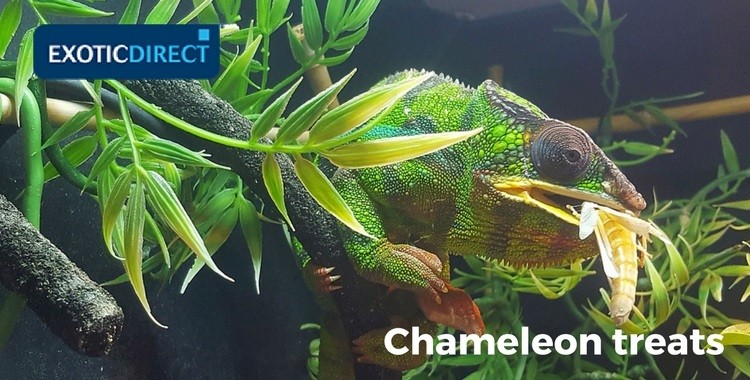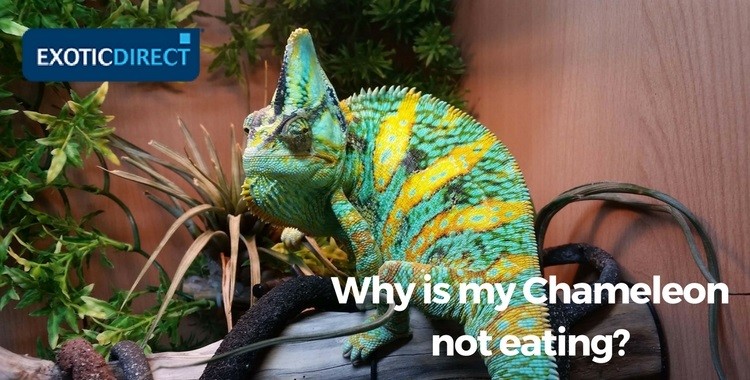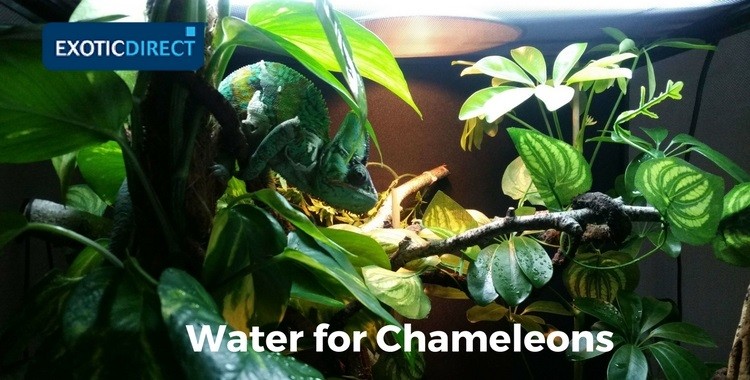What Does A Pet Chameleon Eat to stay healthy and thrive? A pet chameleon’s diet should primarily consist of insects, supplemented with occasional fruits and vegetables for certain species, ensuring a balanced nutritional intake. At PETS.EDU.VN, we offer detailed guidance on crafting the perfect diet for your chameleon, helping you provide the best possible care. Dive into our comprehensive resources to learn about appropriate feeder insects, gut-loading techniques, and the role of supplementation in maintaining your chameleon’s health and well-being.
1. Understanding the Dietary Needs of Pet Chameleons
1.1. What Do Chameleons Eat in the Wild Versus Captivity?
In the wild, chameleons consume a wide variety of insects, small invertebrates, and occasionally small vertebrates like lizards or birds, offering a diverse nutrient profile. According to a study published in the “Journal of Zoology,” wild chameleons exhibit opportunistic feeding behavior, consuming whatever prey is readily available in their habitat. In captivity, it’s crucial to replicate this variety through a carefully planned diet of commercially available insects, supplemented with vitamins and minerals, to prevent nutritional deficiencies.
1.2. Why Is a Varied Diet Important for Chameleons?
A varied diet is vital for chameleons because different insects offer different nutritional values, ensuring the reptile receives a broad spectrum of vitamins and minerals. According to research from the University of California, Davis, a lack of dietary diversity can lead to nutritional deficiencies, impacting bone health, reproduction, and overall vitality in captive reptiles. For instance, crickets are a good source of protein, while mealworms offer fat content. Rotating between several types of insects helps meet all nutritional requirements.
1.3. What Insects Are Safe and Nutritious for Chameleons?
Safe and nutritious insects for chameleons include crickets, dubia roaches, silkworms, hornworms, and calciworms. Crickets are a staple due to their availability and protein content. Dubia roaches are higher in protein and lower in fat than crickets, making them a healthier alternative. Silkworms are rich in calcium and low in fat, while hornworms are hydrating due to their high moisture content. Calciworms (black soldier fly larvae) are excellent for calcium supplementation. Always source insects from reputable breeders to avoid exposure to pesticides or diseases, as noted by the Association of Reptilian and Amphibian Veterinarians.
Moderate the treats that you feed your Cham
2. Essential Feeder Insects for Your Pet Chameleon
2.1. Crickets: A Staple Food Source
Crickets are a commonly used feeder insect for chameleons due to their availability and relatively low cost. They provide a good source of protein, essential for growth and tissue repair. The nutritional value of crickets can be enhanced by “gut-loading” them with nutritious foods before feeding them to your chameleon. According to a study in the “Journal of Animal Physiology and Animal Nutrition,” gut-loading crickets with a calcium-rich diet significantly increases the calcium content available to the reptile.
2.2. Dubia Roaches: A Nutritious Alternative
Dubia roaches are gaining popularity as a feeder insect due to their higher protein content and lower fat content compared to crickets. They are also easier to keep and breed, making them a sustainable option for chameleon owners. Research from Texas A&M University indicates that dubia roaches have a better protein-to-fat ratio, contributing to healthier weight management in reptiles.
2.3. Silkworms: A Calcium-Rich Treat
Silkworms are an excellent source of calcium and are low in fat, making them a healthy treat option for chameleons. They are also easily digestible, which is beneficial for young or sensitive chameleons. A study published in “Comparative Biochemistry and Physiology” highlights that silkworms contain essential amino acids that support optimal growth and development in reptiles.
2.4. Hornworms: Hydration and Nutrition
Hornworms are high in moisture content, making them a great choice for hydrating your chameleon, especially during dry seasons or if your chameleon is not drinking enough water. They also provide essential nutrients. According to the University of Florida’s Entomology and Nematology Department, hornworms are easy to digest and can help prevent dehydration in reptiles.
2.5. Calciworms (Black Soldier Fly Larvae): Calcium Supplementation
Calciworms, also known as black soldier fly larvae, are rich in calcium and are a good option for supplementing your chameleon’s calcium intake. They have a balanced calcium-to-phosphorus ratio, which is crucial for bone health. A study in the “Journal of Herpetological Medicine and Surgery” suggests that calciworms can help prevent metabolic bone disease in captive reptiles due to their high calcium content.
3. The Importance of Gut-Loading Feeder Insects
3.1. What Is Gut-Loading and Why Is It Important?
Gut-loading involves feeding nutritious foods to feeder insects before offering them to your chameleon, thereby enhancing their nutritional value. This process ensures that the chameleon receives a well-rounded diet with essential vitamins and minerals. According to the Veterinary Information Network, gut-loading can significantly improve the health and vitality of captive reptiles by addressing common nutritional deficiencies.
3.2. Best Foods for Gut-Loading Insects
The best foods for gut-loading insects include fresh vegetables like kale, collard greens, and sweet potatoes, as well as fruits like apples and oranges. These foods provide essential vitamins, minerals, and antioxidants that are transferred to your chameleon when it consumes the insects. Research from the University of California, Davis, recommends using a variety of gut-loading foods to maximize the nutritional benefits for the reptile.
3.3. How Long Should Insects Be Gut-Loaded Before Feeding?
Insects should be gut-loaded for at least 24 hours before feeding them to your chameleon to ensure they have had enough time to consume and digest the nutritious foods. This allows the nutrients to be absorbed into the insect’s body, making them a more nutritious meal for your chameleon. Experts at PETS.EDU.VN recommend a 48-hour gut-loading period for optimal results.
4. Supplementation: Vitamins and Minerals for Chameleon Health
4.1. Why Is Supplementation Necessary for Captive Chameleons?
Supplementation is necessary because captive environments often lack the natural variety and nutritional balance that chameleons would receive in the wild. Essential nutrients like calcium, vitamin D3, and other vitamins and minerals are often deficient in commercially raised feeder insects. According to the Association of Reptilian and Amphibian Veterinarians, supplementation helps prevent common health issues like metabolic bone disease and ensures optimal growth and development.
4.2. Essential Vitamins and Minerals for Chameleons
Essential vitamins and minerals for chameleons include:
- Calcium: Crucial for bone health, muscle function, and nerve transmission.
- Vitamin D3: Necessary for calcium absorption and bone metabolism.
- Vitamin A: Important for vision, skin health, and immune function.
- Vitamin E: An antioxidant that protects cells from damage.
- B Vitamins: Support energy metabolism and nerve function.
A study in the “Journal of Exotic Pet Medicine” emphasizes the importance of balanced supplementation to maintain the health and well-being of captive reptiles.
4.3. How to Properly Supplement Your Chameleon’s Diet
The most common method of supplementation is dusting feeder insects with a vitamin and mineral powder before feeding them to your chameleon. It’s important to use a high-quality supplement specifically formulated for reptiles and to follow the recommended dosage instructions.
| Supplement | Frequency | Purpose |
|---|---|---|
| Calcium Powder | Every feeding (except when using D3) | Bone health, muscle function |
| Vitamin D3 Supplement | 2-3 times per week | Calcium absorption, bone metabolism |
| Multivitamin Supplement | Once per week | Overall health, immune function |



PETS.EDU.VN recommends consulting with a reptile veterinarian to determine the specific supplementation needs of your chameleon based on its age, species, and overall health.
Is your Chameleon bored of his food?
5. Fruits and Vegetables: A Supplemental Food Source
5.1. Can Chameleons Eat Fruits and Vegetables?
Yes, certain species of chameleons, particularly Veiled Chameleons, can benefit from the occasional addition of fruits and vegetables to their diet. These can provide additional vitamins, minerals, and hydration. However, it’s essential to offer only safe and appropriate options. According to research from the University of Zurich, fruits and vegetables should be considered a supplemental part of the diet, not a primary food source.
5.2. Safe Fruits and Vegetables for Chameleons
Safe fruits and vegetables for chameleons include:
- Leafy Greens: Collard greens, kale, and dandelion greens
- Vegetables: Squash, sweet potato, and carrots
- Fruits: Berries (strawberries, blueberries, raspberries) and melon
It’s crucial to wash all produce thoroughly and offer it in small, bite-sized pieces to prevent choking. PETS.EDU.VN advises against feeding chameleons citrus fruits, avocados, and other potentially toxic foods.
5.3. How to Introduce Fruits and Vegetables to Your Chameleon
To introduce fruits and vegetables, start by offering small pieces alongside their regular insect diet. Monitor your chameleon’s reaction and consumption. Some chameleons may readily accept these new foods, while others may be hesitant. If your chameleon refuses to eat fruits and vegetables, don’t force it; focus on providing a well-balanced insect diet with appropriate supplementation.
6. Feeding Frequency and Portion Sizes
6.1. How Often Should You Feed Your Chameleon?
Feeding frequency depends on the chameleon’s age and species. Younger chameleons require more frequent feedings to support their rapid growth, while adults can be fed less often.
| Age Group | Feeding Frequency |
|---|---|
| Baby (0-6 months) | 2-3 times daily |
| Juvenile (6-12 months) | Once daily |
| Adult (12+ months) | 3-4 times per week |
6.2. Appropriate Portion Sizes for Different Ages
Portion sizes should be adjusted based on the chameleon’s age and appetite. A general guideline is to offer as many insects as the chameleon can consume in a 5-10 minute period. Avoid overfeeding, which can lead to obesity and other health issues.
- Baby Chameleons: Offer small insects, such as pinhead crickets or fruit flies, in small quantities multiple times a day.
- Juvenile Chameleons: Offer appropriately sized crickets, roaches, or silkworms once a day.
- Adult Chameleons: Offer a mix of insects 3-4 times per week, ensuring they are appropriately sized for the chameleon to consume easily.
6.3. Adjusting Feeding Based on Activity Level and Health
Adjust feeding based on your chameleon’s activity level and overall health. If your chameleon is very active and growing, it may require more food. If it is less active or showing signs of weight gain, reduce the amount of food offered. Monitor your chameleon’s body condition regularly and consult with a reptile veterinarian if you have any concerns about its diet or health. According to the “Journal of Herpetology,” regular monitoring and adjustments are crucial for maintaining optimal health in captive reptiles.
7. Hydration: Ensuring Your Chameleon Stays Hydrated
7.1. How Do Chameleons Drink Water?
Chameleons typically do not drink from standing water. Instead, they drink droplets of water from leaves and other surfaces. They rely on humidity and regular misting to stay hydrated. The University of Bristol’s research on chameleon behavior indicates that providing a suitable water source is essential for their well-being.
7.2. Best Methods for Providing Water to Chameleons
The best methods for providing water to chameleons include:
- Misting Systems: Automatic misting systems that spray water at regular intervals.
- Dripping Systems: Systems that drip water onto leaves or other surfaces.
- Hand Misting: Manually misting the enclosure several times a day.
7.3. Recognizing Signs of Dehydration in Chameleons
Signs of dehydration in chameleons include:
- Sunken eyes
- Wrinkled skin
- Lethargy
- Reduced appetite
- Thick, sticky saliva
If you notice any of these signs, increase misting frequency and consult with a reptile veterinarian. PETS.EDU.VN emphasizes the importance of consistent hydration to prevent serious health issues.
Mistings systems or a plant dripper work well for your Cham
8. Common Feeding Mistakes to Avoid
8.1. Overfeeding and Obesity
Overfeeding is a common mistake that can lead to obesity and other health problems in chameleons. Avoid offering too much food at once and monitor your chameleon’s weight regularly. According to the “Journal of Veterinary Science,” obesity can lead to fatty liver disease, heart problems, and reduced lifespan in reptiles.
8.2. Feeding Toxic Foods
Feeding toxic foods can be harmful or even fatal to chameleons. Avoid offering citrus fruits, avocados, onions, garlic, and other foods known to be toxic to reptiles. Always research before introducing new foods into your chameleon’s diet. PETS.EDU.VN provides a comprehensive list of safe and unsafe foods for chameleons.
8.3. Neglecting Gut-Loading and Supplementation
Neglecting gut-loading and supplementation can lead to nutritional deficiencies and health problems in chameleons. Ensure that feeder insects are properly gut-loaded and that your chameleon receives appropriate vitamin and mineral supplementation. Research from the University of Georgia indicates that proper nutrition is crucial for preventing metabolic bone disease and other common health issues in captive reptiles.
9. Troubleshooting Feeding Problems
9.1. Why Is My Chameleon Not Eating?
There are several reasons why your chameleon might not be eating, including:
- Stress: Changes in the environment, such as a new enclosure or handling, can cause stress and reduce appetite.
- Illness: Parasites, infections, and other health problems can affect appetite.
- Incorrect Temperature: Improper temperature gradients can affect digestion and appetite.
- Lack of Variety: A monotonous diet can lead to boredom and food refusal.
9.2. Solutions for Picky Eaters
If your chameleon is a picky eater, try the following solutions:
- Offer a Variety of Insects: Rotate between different types of feeder insects to stimulate appetite.
- Gut-Load with Appealing Foods: Gut-load insects with fruits and vegetables that your chameleon might find appealing.
- Try Hand-Feeding: Offer insects directly from your hand or using tongs to encourage feeding.
- Adjust the Environment: Ensure that the temperature and humidity levels are appropriate for your chameleon’s species.
9.3. When to Consult a Veterinarian
Consult a veterinarian if your chameleon refuses to eat for an extended period or shows other signs of illness, such as lethargy, weight loss, or abnormal behavior. A veterinarian can diagnose and treat any underlying health problems that may be affecting your chameleon’s appetite. PETS.EDU.VN recommends regular check-ups with a reptile veterinarian to ensure your chameleon stays healthy.
10. The Role of PETS.EDU.VN in Your Chameleon’s Diet
10.1. Comprehensive Resources for Chameleon Care
PETS.EDU.VN offers comprehensive resources for chameleon care, including detailed guides on nutrition, housing, health, and behavior. Our website provides up-to-date information and expert advice to help you provide the best possible care for your chameleon.
10.2. Expert Advice and Support
Our team of experienced reptile keepers and veterinarians are available to answer your questions and provide personalized advice on your chameleon’s diet and care. Whether you need help choosing the right feeder insects, troubleshooting feeding problems, or developing a supplementation plan, we are here to support you every step of the way.
10.3. Community Forum for Chameleon Owners
Join our community forum to connect with other chameleon owners, share experiences, and learn from each other. Our forum is a great place to ask questions, get advice, and stay up-to-date on the latest trends in chameleon care. PETS.EDU.VN is committed to fostering a supportive and informative community for reptile enthusiasts.
FAQ: Frequently Asked Questions About Chameleon Diets
1. What is the best staple food for a chameleon?
The best staple foods for chameleons are crickets and dubia roaches due to their protein content and availability.
2. How often should I dust insects with calcium?
Dust insects with calcium at almost every feeding, except for once or twice a week when you dust with a multivitamin supplement.
3. Can chameleons eat mealworms?
Mealworms can be offered sparingly as they are high in fat and can lead to obesity if fed too often.
4. What vegetables are safe for chameleons to eat?
Safe vegetables include collard greens, kale, squash, and sweet potato, offered in small amounts.
5. Is it okay to feed my chameleon wild-caught insects?
No, it is not recommended to feed wild-caught insects as they may carry parasites or be exposed to pesticides.
6. How important is water for chameleons?
Water is extremely important, and chameleons require regular misting or a drip system to stay hydrated.
7. What are the signs of a calcium deficiency in chameleons?
Signs include tremors, muscle weakness, and metabolic bone disease.
8. Can baby chameleons eat the same food as adults?
Baby chameleons should be fed smaller insects more frequently than adults.
9. What should I do if my chameleon stops eating?
Check for stress, illness, and environmental factors, and consult a veterinarian if the problem persists.
10. Where can I find reliable information about chameleon care?
PETS.EDU.VN provides comprehensive resources and expert advice on chameleon care.
Providing a balanced and varied diet is crucial for the health and well-being of your pet chameleon. By understanding their dietary needs, offering a variety of safe and nutritious foods, and avoiding common feeding mistakes, you can help your chameleon thrive. For more in-depth information and expert guidance, visit PETS.EDU.VN. Our team is dedicated to helping you provide the best possible care for your reptile companion.
For further assistance, contact us at 789 Paw Lane, Petville, CA 91234, United States, or reach out via WhatsApp at +1 555-987-6543. You can also explore our website at pets.edu.vn for additional resources and services.
